How to ensure fuse selectivity
Selectivity (selectivity) of fuse protection is ensured by choosing fuses in such a way that in the event of a short circuit, for example, on a branch to an electrical receiver, the nearest fuse that protects this electrical receiver is triggered, but the fuse , protecting the network head, does not work.
Selection of fuses according to selectivity conditions
The selection of fuses for the selectivity condition should be carried out using the typical time current characteristics t = f (I) of the fuses, taking into account the possible spread of real characteristics according to the manufacturer's data.
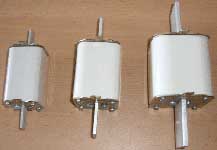
When protecting networks with fuses of type PN, NPN and NPR with typical characteristics shown in the figures, the selectivity of the protective action will take place if between the rated current of the fuse protecting the head of the network Ig and the rated current of the fuse of the branch to the consumer Io certain ratios are maintained...
For example, at low fuse overload currents (about 180-250%), the selectivity will be maintained if Ig is greater than Io by at least one step of the standard scale of rated fuse currents.
In the event of a short circuit, the selectivity of NPN fuse protection will be ensured if the following relationships are maintained:
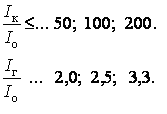
Here Ik is the branch short-circuit current, A; Ig — nominal current of the mains fuse, A; Io — rated current of the branch fuse, A.
The ratios between the rated fuse currents Ig and Io for PN2 type fuses providing reliable selectivity are given in Table 1.
Table 1. Rated currents of series-connected fuses PN2 fuses, providing reliability selectivity
Rated current less fusible link AzO, A
Rated current greater fusible link AzG, A, with the ratio Ik / Io
10
20
50
100 and more
30
40
50
80
120
40
50
60
100
120
50
60
80
120
120
60
80
100
120
120
80
100
120
120
150
100
120
120
150
150
120
150
150
250
250
150
200
200
250
250
200
250
250
300
300
250
300
300
400
more than 600
300
400
400
more than 600
—
400
500
more than 600
—
—
Note. Ik — short-circuit current at the beginning of the protected section of the network.
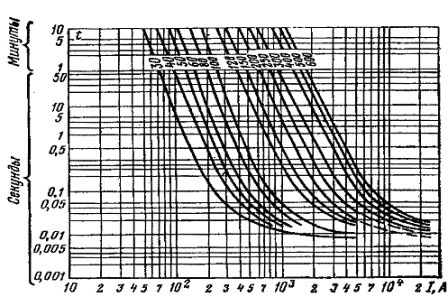
Protective (current-time) characteristics of fuses type PN-2
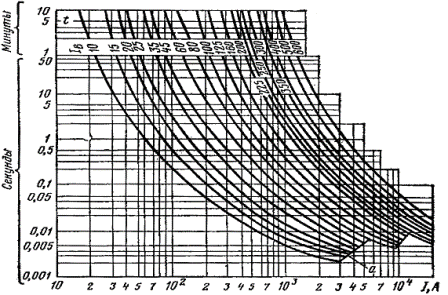
Protection (current-time) characteristics of NPR and NPN type fuses
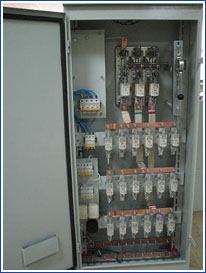 Selection of fuses according to the condition of selectivity according to the method corresponding to the protective characteristics of the fuses
Selection of fuses according to the condition of selectivity according to the method corresponding to the protective characteristics of the fuses
To select fuses according to the selectivity condition, you can use the method of matching the fuse characteristics, which is based on the principle of comparing the cross sections of the fuses according to the formula:

where F1 is the cross-section of the fuse located closer to the power source; F2 - cross-section of the fuse located further from the power source, i.e. closer to the load.
The obtained value of a is compared with the data in Table 2, which shows the smallest values of a at which selectivity is ensured. The selectivity of the protection will be guaranteed if the calculated value is equal to or greater than the table value.
table 2 The smallest values of a at which selectivity protection is ensured
Metal fuses fuse located closer to the power supply (for each type of fuse)
Behavior a fuse cross-sections of adjacent fuses if the fuse is closest to the load
with filler when melting insert from
without magazine with fuse made of
honey
silver
zinc
I lead
honey
silver
zinc
I lead
Med
1,55
1,33
0,55
0,2
1,15
1,03
0,4
0,15
Silver
1,72
1,55
0,62
0,23
1,33
1,15
0,46
0,17
Zinc
4,5
3,95
1,65
0,6
3,5
3,06
1,2
0,44
I lead
12,4
10,8
4,5
1,65
9,5
8,4
3,3
1,2
